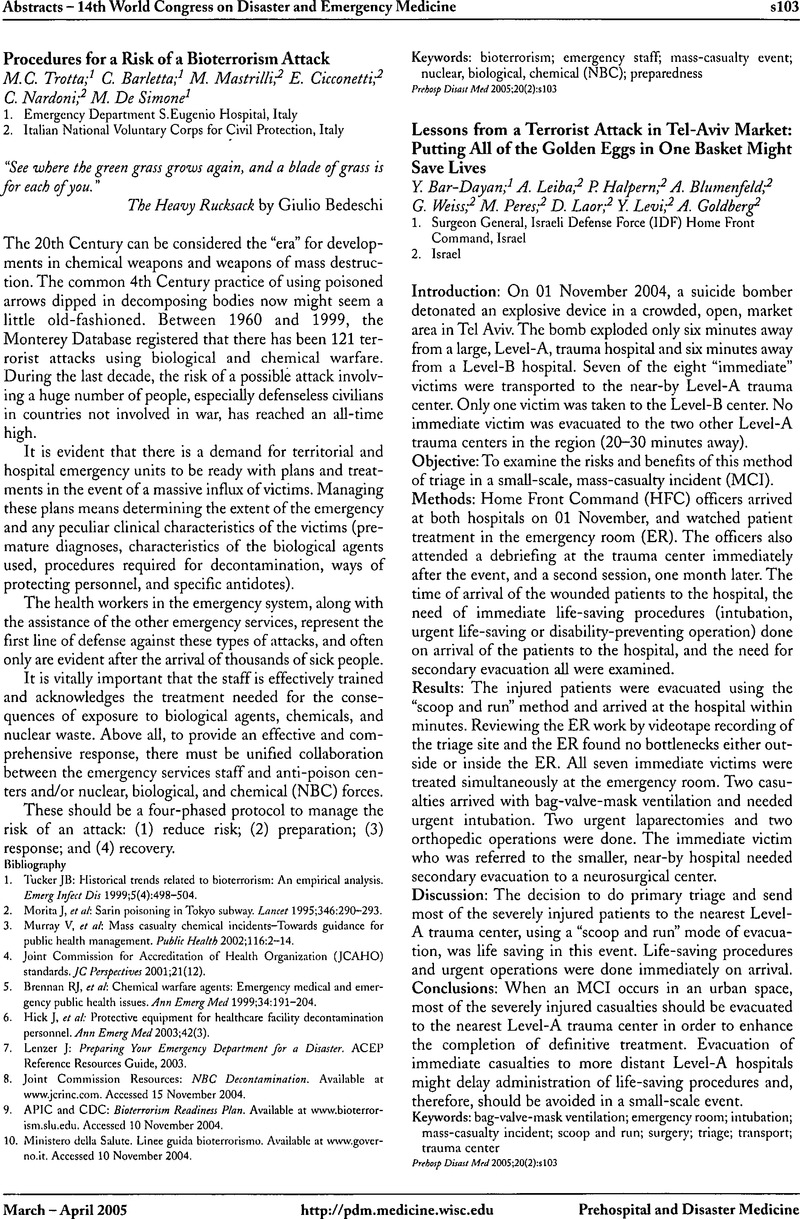No CrossRef data available.
Article contents
Procedures for a Risk of a Bioterrorism Attack
Published online by Cambridge University Press: 28 June 2012
Abstract
An abstract is not available for this content so a preview has been provided. As you have access to this content, a full PDF is available via the ‘Save PDF’ action button.

Keywords
- Type
- Poster Presentations
- Information
- Copyright
- Copyright © World Association for Disaster and Emergency Medicine 2005
References
1.Tucker, JB: Historical trends related to bioterrorism: An empirical analysis. Emerg Infect Dis 1999;5(4):498–504.CrossRefGoogle ScholarPubMed
3.Murray, V, et al. : Mass casualty chemical incidents–Towards guidance for public health management. Public Health 2002;116:2–14.CrossRefGoogle ScholarPubMed
4.Joint Commission for Accreditation of Health Organization (JCAHO) standards. JC Perspectives 2001;21(12).Google Scholar
5.Brennan, RJ, et al. : Chemical warfare agents: Emergency medical and emergency public health issues. Ann Emerg Med 1999;34:191–204.CrossRefGoogle ScholarPubMed
6.Hick, J, et al. : Protective equipment for healthcare facility decontamination personnel. Ann Emerg Med 2003;42(3).CrossRefGoogle Scholar
7.Lenzer, J: Preparing Your Emergency Department for a Disaster. ACEP Reference Resources Guide, 2003.Google Scholar
8.Joint Commission Resources: NBC Decontamination. Available at www.jcrinc.com. Accessed 15 November 2004.Google Scholar
9.APIC and CDC: Bioterrorism Readiness Plan. Available at www.bioterrorism. slu.edu. Accessed 10 November 2004.Google Scholar
10. Ministero della Salute. Linee guida bioterrorismo. Available at www.governo. it. Accessed 10 November 2004.Google Scholar


